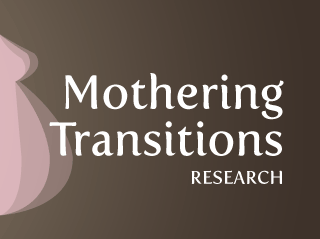Peer Volunteer Training Manual Table of Contents
Mothers Helping Mothers With Postpartum Depression
- Welcome 2
- Section I: Introduction 6
- The Research Study and Team 8
- Organizational Structure and Function 9
- Mission Statement and Goals 10
- Training Session Agenda 11
- How to Use this Manual 12
- Section II: The Peer Volunteer Experience 14
- What is a Peer Volunteer? 16
- Peer Volunteer Qualities 16
- Peer Volunteer Skills 16
- Peer Volunteer Expectations 17
- Peer Volunteer Activity Log 18
- Peer Volunteer Role 19
- Peer Volunteer Discussion Themes 20
- Frequently Asked Questions 21
- Peer Volunteer Contact Sheet 22
- Peer Volunteer Contract 23
- Section III: Providing Peer (Mother-to-Mother) Support 24
- Mothers Helping Mothers Model 26
- Emotional Support 27
- Informational Support 28
- Validation/Appraisal Support 29
- Benefits of Peer Support 30
- Section IV: Getting Connected – Staying Connected: Developing a Relationship with the New Mother 32
- Getting Connected 34
- Staying Connected 34
- Developing a Relationship with the Mother 35
- Section V: Skills and Techniques to Effective Telephone Support 38
- Empathetic Listening 40
- Reflection 41
- “Open-Ended” Questions 42
- Listening To More Than the Words 43
- Problem-Solving and Exploring Options 43
- Section VI: Postpartum Depression 44
- What is Postpartum Depression? 46
- Incidence 46
- Postpartum Depression Symptoms 47
- Postpartum Psychosis Symptoms 48
- Different Presentation of Postpartum Depression 49
- Anxiety and Panic 50
- What Causes Postpartum Depression? 50
- Detection 51
- Treatment 51
- Section VII: The Three-Step Helping Process 52
- The Relationship Between Feelings, Behaviours, and Thoughts 54
- The Three-Step Helping Process 55
- Step 1. Exploring with the Mother 55
- Step 2. Setting Priorities with the Mother 56
- Step 3. Preventing/Treating Early Symptoms of Postpartum Depression 56
- Common Maternal Difficulties 57
- Section VIII: Helping the Mothers with Her Behaviours and Thoughts 58
- Increasing Pleasant Activities 60
- Relaxing on the Run 61
- Understanding and Coping with Stress 61
- Promoting Positive Self-Esteem 63
- Increasing Positive Thoughts 64
- Promoting Self-Care 66
- Finding a Babysitter 67
- Section IX: Helping Mothers with Her Feelings 68
- Assessing the Mother 70
- Helping the Mother to Identify Her Feelings 71
- Helping the Mother to Explore Her Feelings 71
- Helping the Mother Do Emotional Work 72
- Sadness 72
- Anger 73
- Numbness or Absence of Feelings 75
- Anxiety 76
- Fears 77
- Suicidal Feelings 78
- Helping the Mother to Develop a Support System 81
- Section X: Dispelling the Myths of Motherhood 82
- Myths and Unrealistic Expectations of Motherhood 84
- Section XI: Referral to Professional and Community Services 86
- What Constitutes an Emergency 88
- When a Mother Needs to be Hospitalized 88
- Child Abuse 89
- Child Neglect 90
- Mothers Experiencing Domestic Violence 91
- Vancouver and the Lower Mainland Referral Numbers 93
- Additional Possible Referral Sources 94
- What is the Difference Between a Psychologist and a Psychiatrist? 95
- What Kind of Mental Health Professional Should a Mother See? 95
- What Should a Mother Look for in a Therapist? 96
- Section XII: What the Partner Can Do 98
- What the Partner Can Do 100
- Things I Need From You Right Now 100
- Common Partner Issues 101
- Common Partner Stressors 101
- Survival Tips for Partners 102
- Section XIII: Recovery 104
- Recovery 106
- Stage One 106
- Stage Two 106
- Stage Three 107
- Stage Four 107
- Stage Five 108
- When to End the Relationship 109
- Preventing Relapse 109
- Section XIV: Case Studies and Evaluation of the Training Session 112
- Case Studies 114
- Training Evaluation 118
- Training Evaluation Form 120
- Peer Volunteer Demographic Form 121
